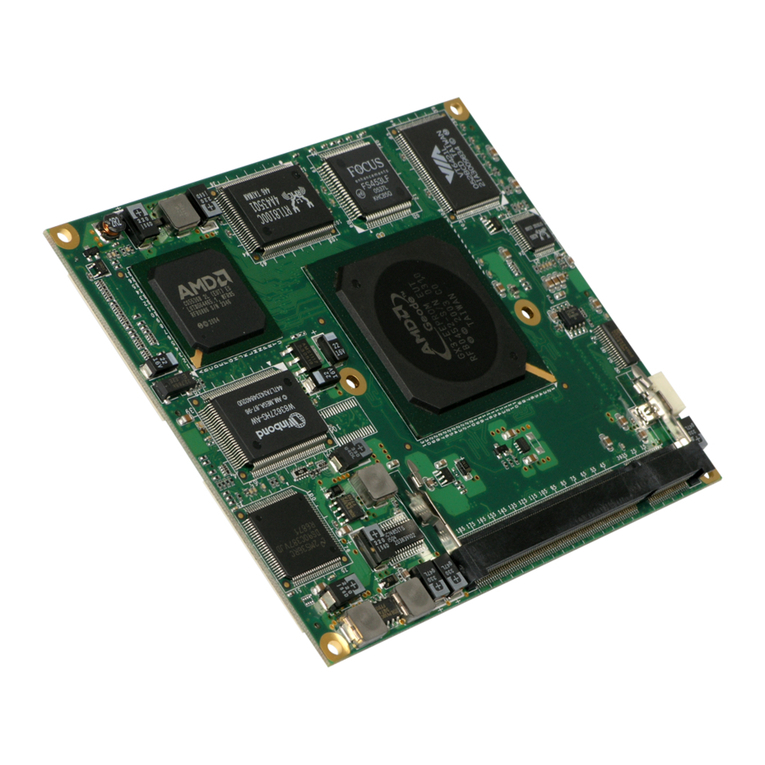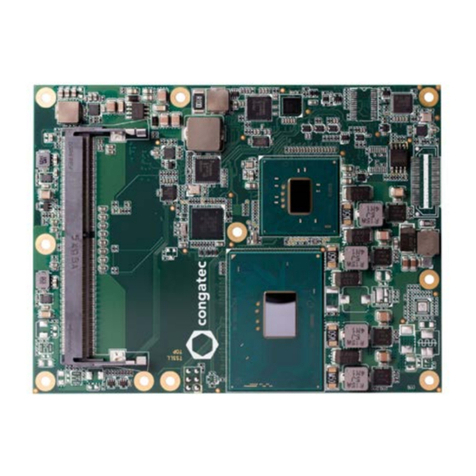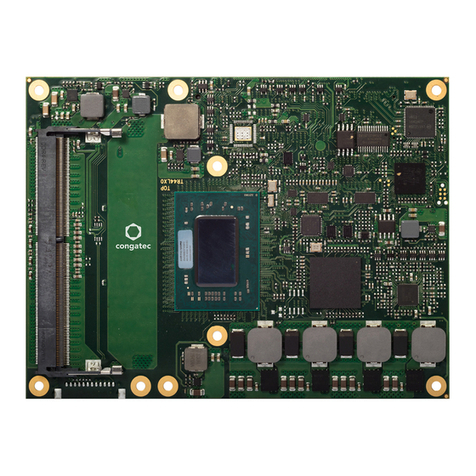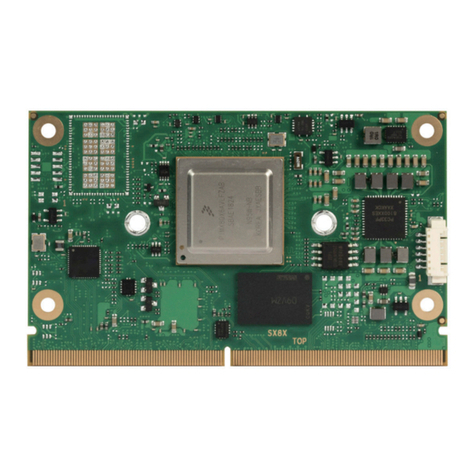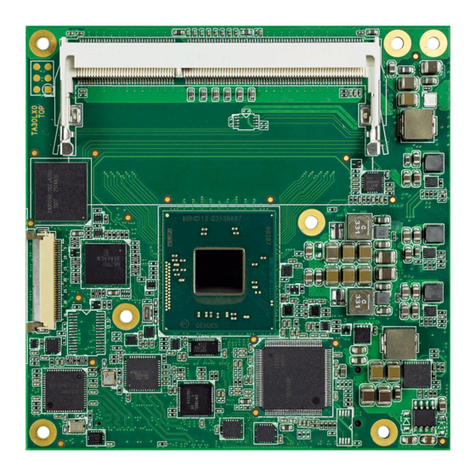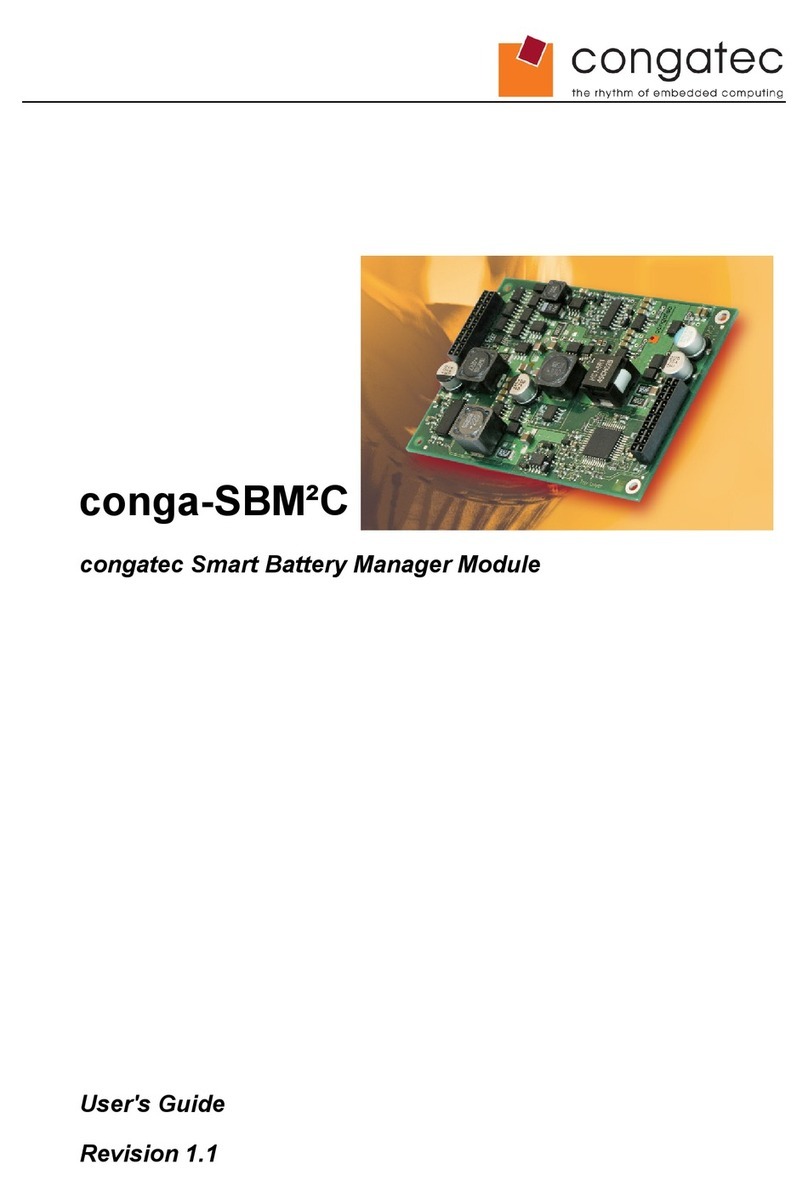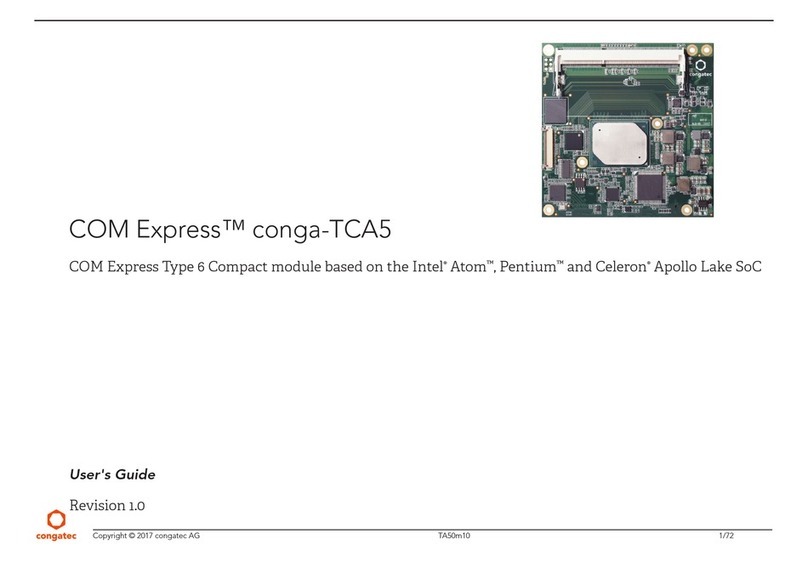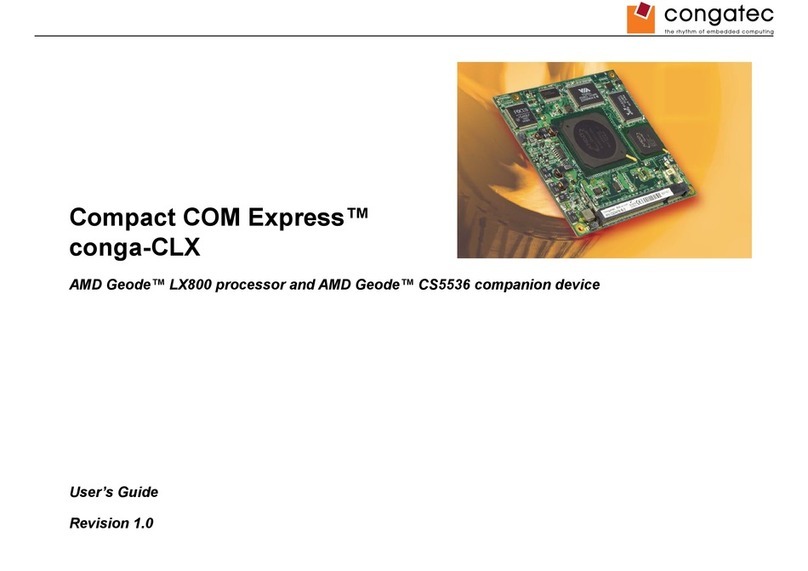
Copyright © 2019 congatec AG QX8X_SDS_q10.indd 3/10
Warranty
congatec AG makes no representation, warranty or guaranty, express
or implied regarding the products except its standard form of limited
warranty (“Limited Warranty”) per the terms and conditions of the
congatec entity, which the product is delivered from. These terms and
conditions can be downloaded from www.congatec.com. congatec AG
may in its sole discretion modify its Limited Warranty at any time and from
time to time.
The products may include software. Use of the software is subject to the
terms and conditions set out in the respective owner’s license agreements,
which are available at www.congatec.com and/or upon request.
Beginning on the date of shipment to its direct customer and continuing
for the published warranty period, congatec AG represents that the
products are new and warrants that each product failing to function
properly under normal use, due to a defect in materials or workmanship
or due to non conformance to the agreed upon specifications, will be
repaired or exchanged, at congatec’s option and expense.
Customer will obtain a Return Material Authorization (“RMA”) number
from congatec AG prior to returning the non conforming product freight
prepaid. congatec AG will pay for transporting the repaired or exchanged
product to the customer.
Repaired, replaced or exchanged product will be warranted for the
repair warranty period in effect as of the date the repaired, exchanged or
replaced product is shipped by congatec, or the remainder of the original
warranty, whichever is longer. This Limited Warranty extends to congatec’s
direct customer only and is not assignable or transferable.
Except as set forth in writing in the Limited Warranty, congatec makes no
performance representations, warranties, or guarantees, either express or
implied, oral or written, with respect to the products, including without
limitation any implied warranty (a) of merchantability, (b) of fitness for a
particular purpose, or (c) arising from course of performance, course of
dealing, or usage of trade.
congatec AG shall in no event be liable to the end user for collateral or
consequential damages of any kind. congatec shall not otherwise be
liable for loss, damage or expense directly or indirectly arising from the
use of the product or from any other cause. The sole and exclusive remedy
against congatec, whether a claim sound in contract, warranty, tort or any
other legal theory, shall be repair or replacement of the product only.
Technical Support
congatec AG technicians and engineers are committed to providing the best
possible technical support for our customers so that our products can be easily
used and implemented. We request that you first visit our website at www.
congatec.com for the latest documentation, utilities and drivers, which have
been made available to assist you. If you still require assistance after visiting our
website then contact our technical support department by email at support@
congatec.com
